Amílcar Cabral d’après l’art Conceptuel or The Liberation Struggle as Conceptual Art
Positionality
I have not yet had the chance to visit Guinea-Bissau. Why do I want to talk about Guinea-Bissau then?
It began in May 2020, when, by serendipity, I was completely hooked up by this subject. Slightly obsessed, even. I guess I felt like German philosopher Max Bense felt towards Brazil: “it is not by its power relations that a civilization produces general interest. Rather, it does so by the relations it establishes in the sphere of intelligence.”[1] Much later I started to wonder if I was acting like some sort of armchair thinker, studying Guinea-Bissau from an apartment in Berlin Neukölln. A position of privilege, one could say, carrying some contradictions. On the other hand, there were some points in common. Both Brazil and Guinea-Bissau were former colonies of Portugal. Both contexts, peripheric contexts, had high promises and have struggled with underdevelopment. They still do. In those countries, “everything seems that was still under construction and it is suddenly ruin”, as Caetano Veloso, paraphrasing Lévi-Strauss, sung in the early nineties with his smart and well-attuned timing.
It was never my intention to turn a cultural legacy into an object of study, to objectify it; I think I could avoid that slip so far. I simply want to learn from the legacy. My Brazilian identity (uncertain as every identity, I should add), the condition of pertaining to a Global South context, impels me to think on other Global South contexts beside my own. It comes down to drifting, to musing, I invert the slogan from the city of São Paulo, that horrible slogan, Non ducor duco, I invert to: I do not lead, I am led. Guinea-Bissau has been taking my lead for some time now, conducting the dance, even at a distance. It made me rediscover Paulo Freire, it taught me Amilcar Cabral and Pan-Africanism, it reminded me of Yugoslavia and Non-Alignment.
I want to say something solid and perhaps useful about these places and fates that go through ups and downs, like the fates of the Brazilians and the Bissau-Guineans. As Cabral reminded us often, to think about the oppressed also means to think about and collaborate with all humanity.
Amílcar Cabral
The legacy of anti-colonial leader and Pan-Africanist revolutionary Amílcar Cabral (1924-1973) still calls for cultural readings, and not strictly political ones. Contemporary art, so-called “artistic research” and critical theory will benefit from a cross-disciplinary approach which puts Cabral as relevant to art or which turns Cabral’s many contributions into tools. Let’s attempt that and start by having a look at one of Amílcar Cabral’s most famous thoughts, which continues to inspire people struggling against foreign domination to this day: “the liberation struggle is not only a cultural fact, it is also a cultural factor.”
Cabral’s famous maxim appears cryptic at the beginning. What does he mean by saying that “the liberation struggle is also a cultural factor”? It means that resistance is also cultural, not only political. Thus, resistance transforms culture and thus, ultimately, also produces it. Political resistance triggers cultural identity, it points to self-determination. Culture and self-determination are inextricably linked. The political is cultural too. It could be that, now, after this quick exegesis, it seems all too obvious. Surely one thinks of Benjamin, Gramsci, Fanon, Ngũgĩ wa Thiong’o and other political theorists. A study examining the differences between those thinkers would be timely. In any case, Cabral’s maxim has the strength of condensation. In the context of colonialism, the struggle for freedom means fighting to recover the right and liberty of a culture to be itself. The goal of independence, of establishing a nation-state, is only a means to achieve freedom, self-determination, dignity, rights. Cabral never lost sight of the universal. No wonder he had great international prestige and was with no exaggeration a genius of diplomacy. Nowadays, witnessing the complete failure of the transcendent nation-state fully exposed, it is still relevant to think and talk about resistance. What should we resist against? Which conditions trigger a revolutionary drive? The conditions are set and we need to resist more than ever.
Under Amílcar Cabral’s direction, the multi-ethnic people of Guinea-Bissau developed a very special, self-organized anti-colonial struggle to reach its independence. Plenty of sophisticated strategies were employed which had nothing to do with guns[2]. Consequently, many intelligent minds worldwide payed attention to Guinea-Bissau’s liberation struggle and the first years of independence. Basil Davidson, Patrick Chabal, Paulo Freire[3], Chris Marker[4], William Klein[5], to name some. Cabral succeeded in giving to the struggle a very responsible and, with your pardon, humanist dimension[6], sketching and implementing, complementarily to the armed struggle, diverse non-violent methods. He spoke of theory as disposing of a “weapon”. He had a project. After independence was gained, the promises were too high; the tasks overwhelming. From 1974 to 1980, Guinea-Bissau could experience a short-lived socialist period led by Amilcar Cabral’s brother Luís Cabral. Some procedures of democratic participation in decision-making initiated during the years of the armed struggle were continued, such as the popular committees known as comitês de tabanka[7]; cinema[8], music[9], and architecture[10] could thrive; but the ruling class did not commit “suicide”, as Cabral theorized as indispensable for the full success of the national project, gradually institutionalizing political authoritarianism instead. After many mistakes, Luís Cabral was finally ousted in 1980 and a powerful Pan-Africanist project was buried[11]. Under the pressures of the global market, Africa was not allowed to prosper[12]: already in 1983, “[Guinea Bissau’s] ruling party revised its economic policy and embarked on a radical shift, from centrally managed socialism to liberal market capitalism”[13].
Franco ‘Bifo’ Berardi says that the year 1977 was a turning point in History[14]. According to him, from this point on, the idea of “hero” becomes obsolete or anachronic. It could well be 1973, the year of Amílcar Cabral’s assassination. Nowadays, it seems we cannot expect or count with any heroes, and politicians don’t have a project anymore. Government gives way to governance[15] and the human destiny enters autopilot. Meanwhile, we continue “to demand a lot from art, far too much from art”[16] and place it as a redemptive activity, consciously or unconsciously. But just like politics, art is discredited lately. Be that as it may, I believe it is productive to think of conceptual art after Cabral, when both art and politics go through enduring crises.
Anthropophagia, hacking and insertions into ideological circuits
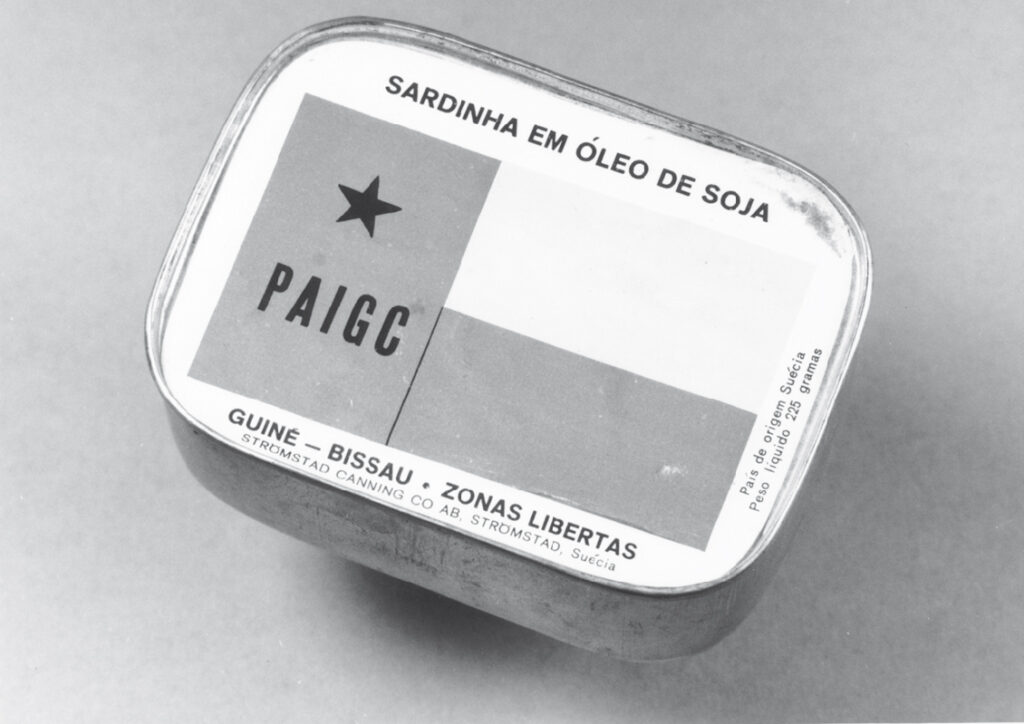
Photo: Stig Lövgren
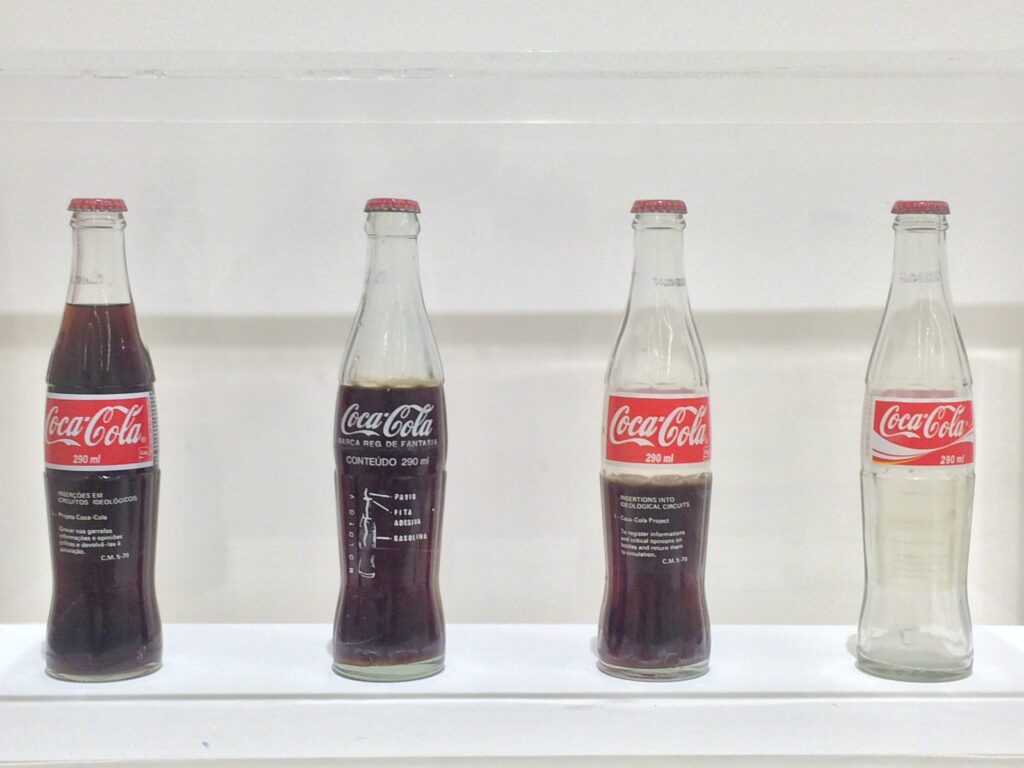
During Guinea-Bissau’s armed struggle for independence that lasted from 1963 to 1974, the territories which were regained by Bissau-Guineans from the Portuguese colonial power were then called “liberated zones”. The PAIGC, the African Party for the Independence of Guinea and Cape Verde founded by Amílcar Cabral, was obtaining different kinds of aid from Eastern Bloc countries, Non-Aligned countries (such as Guinea-Conakry and Yugoslavia among others) and from some European democracies as well, like Sweden, who played an important role, for example by providing school material and food supplies. One of such supplies deserves our attention. The picture on the left depicts a sardine tin which was produced by the Swedish government. Here, the stereotype of the Portuguese product par excellence is presented with the PAIGC design, thus, full of decolonial connotations and not lacking a touch of irony and wit. It is productive to juxtapose it with a now canonical conceptual artwork, the Coca-Cola Project of Brazilian artist Cildo Meireles, which is part of his Insertions into Ideological Circuits. During the Brazilian military dictatorship, in 1970, Meireles took Coca-Cola glass bottles from its normal circulation (after consumption, they use to be recycled by way of a deposit scheme) and modified them by adding critical-political statements, before putting them back into the circuit of exchange. Thus, in a subversive manner, as the bottles emptied of its liquid, the message, printed in white letters on a transparent label, became practically imperceptible only to reappear with good legibility again once the bottles were refilled for recirculation.
From the perspective of Brazilian cultural theorists, the Swedish-funded PAIGC sardine tins have something which would be called “anthropophagic”. It critically absorbs a cultural element of the foreign for its own benefit; metaphorically speaking, it eats and digests, incorporating this element in a new and critical way. This theory, “anthropophagia”, lost a lot of its popularity in the recent years due to a revisionist movement which questions its mainly white and bourgeois origins. However, I would not throw the baby out with the bathwater. The theory remains relevant in many aspects and can be easily and productively applied to different cultural phenomena beyond the Brazilian context, as the sardine tins exemplify. Meireles’ political insertions into Coca-Cola bottles didn’t operate in the “liberated zones” but in the occupied one (the whole country was “occupied” by the right-wing military dictatorship). They are not anthropophagic as the PAIGC sardine tins are; tentatively, we could call them “commensalist” since they act more like the suckerfish which glues underneath the shark, “a kind of mobile graffiti” in Meireles own words[17], using the American product to spread its message, while the PAIGC sardine tins hack a Portuguese product, converting it into Bissau-Guinean, being fully anthropophagic even if not belonging to Brazilian art history. As it became clear, both projects employ the same strategy, only reversely, due to the particularities of each circumstance.
How to do things with words
After Amílcar Cabral’s assassination, to achieve independence was a matter of pride and obstinacy to Bissau-Guineans against no matter what circumstance. It was the only vengeance possible for Cabral’s death. “Cabral’s achievement was to make the PAIGC into a force which fought with schools, clinics and ballot boxes as well as with weapons, and which can sustain its momentum even without his leadership”, wrote a journalist for The Economist then. Indeed, there was no coming back to the previous situation for this people who had organized a struggle, acted clandestinely, learned how to fight, faced perils and lost comrades, who had educated children, teenagers and adults in the mangrove forests under constant risk of aerial bombing. Cabral knew of the possibility of getting killed treacherously, quite earlier then, probably as early as 1965, he had already sketched with other leaders of the struggle a carefully thought unilateral declaration of independence[18], an event which can be compared to a conceptually conceived piece of performance art, since it involved certain actions to be executed according to a plan and in front of an invited audience. Luís Cabral is even supposed to have said, prior to the activities, that “these things are either done with dignity or not at all”, much as a conceptual artist could have said, too. Eight months after Cabral’s death, it took place in Lugadjol, located in the Boé region on the Eastern part of the country, strategically not far from Guinea-Conacry’s border, on 24 September 1973. Preparations for the proclamation required gatherings and rehearsals of the main acts. There were benches built with tree chunks and foldable chairs for the various guests, journalists and diplomats, among them, Cuban, Swedish, Senegalese, Eastern Bloc delegates and Guinea-Conakry representatives. Fulfilling Amílcar Cabral’s wish, it was documented on film by Flora Gomes, as well as by camera men from the foreign press[19]. A report transmitted two days later by the PAIGC to Dakar places the proclamation at 9:55AM on that Monday. According to historical witnesses, even under the danger of aerial bombing the ceremony went on for hours, until 6pm, ending with a popular party animated by the rhythm of traditional drums. Very much in line with the speech act theory, one could say that the whole event was performative and not simply declarative; it held performative speech acts uttered by the main political figures of the struggle thus consecrating the independence in the presence of many. After that, the road leading to fully recognized independence and national sovereignty was of no return – the success, guaranteed by that performative event. So performative it was that it triggered a chain reaction which affected Portugal’s internal politics, culminating in the Carnation Revolution of 25 April 1974 which put an end to 41 years of uninterrupted dictatorship, thus also contributing to Portuguese transition to democracy[20].
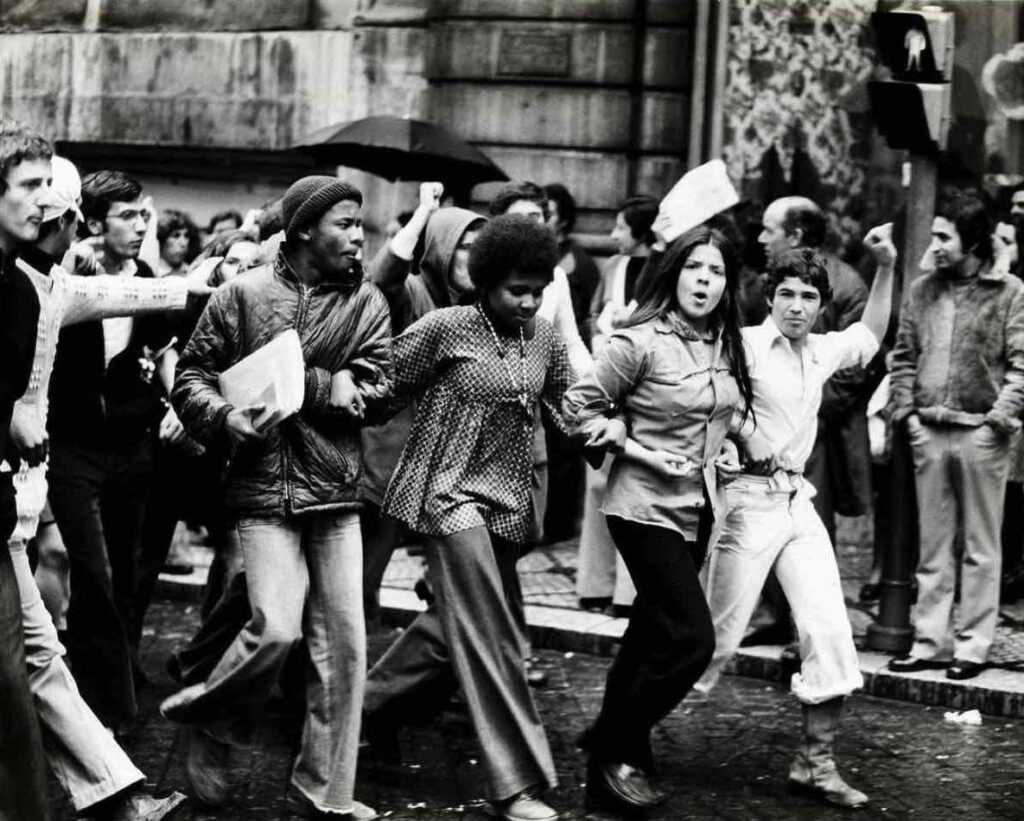
Back in the days
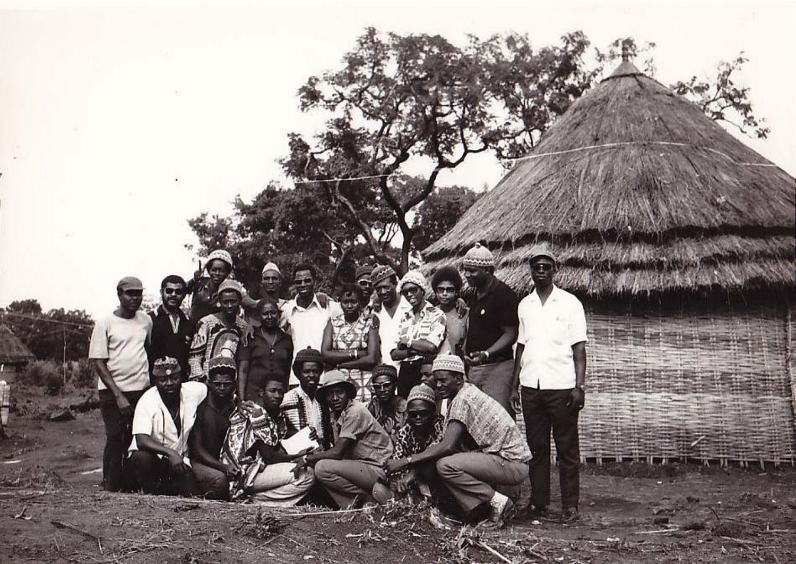
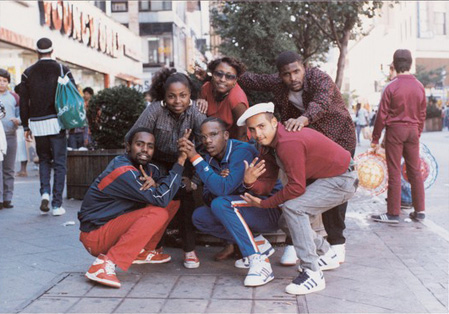
In 1974, Afro-Brazilian musician Tim Maia sang emphatically: “I came here to tell you that they are now in a relaxed mood, in a quiet, in a good one! Guinea-Bissau, Mozambique and Angola!”. Independence – and early post-independence days – must have been indeed exhilarating, as many songs, photos and oral accounts attest. We have briefly analyzed some possible connections between Guinea-Bissau’s liberation struggle and conceptual art from the 1960s and 1970s, firstly, by relating the PAIGC sardine tins with South American conceptual art produced under military dictatorship, simultaneously revealing both the aesthetic awareness of a political, anti-colonial struggle, and the political engagement immanent in some artistic practices of 1970s Brazil, well represented by Cildo Meireles’ work. In both contexts, an attention to the potential of daily objects as vehicles for a message is present. Secondly, we evoked the declaration of independence done without the colonizer’s consent as a decolonial performative speech event, and related such bold political move to performance art which, as it is known, was nurtured by many philosophical theories, among them, the speech act theory of British philosopher J. L. Austin. We also mentioned something important, which was Cabral’s concern with having this event film-recorded (therefore, framed in the broader sense of the word) by a local, effectively, Flora Gomes, thus employing its faculties, tools and aesthetic choices to produce an historical self-representation of the newly independent nation. Issues of the body and how one can represent oneself are then raised, leading us to our last juxtaposition. The right to be free to represent oneself as one wants to, free of the bias of colonialism, is part of the decolonial agenda. The picture on the left was taken at the celebrations of the 1st anniversary of independence on 24 September 1974 in Madina de Boé. The body language of the subjects reveal pride, tranquility, a sense of achievement, readiness for the upcoming future. As we know, posing for a photo is not a passive stance; by letting yourself be photographed, you have some agency over the way you will be represented, by choosing your pose, face expression, body language, clothes. Here, do we see a prelude to 1980s hip-hop affirmative body language, beautifully captured by Jamel Shabazz’s lenses? – or actually a forgotten source of inspiration, since Hip-Hop culture was strongly nurtured by the black culture of the previous decade? The awareness of one’s own body and how it is depicted by the mass media appears both in the context of post-independence optimism and in the ghetto culture of New York. The 1980s were a period of economic aggression and austerity that nevertheless couldn’t stop certain cultural expressions to flourish. The body language captured in both photos reveal ultimately the same body language, one of courage, of overcoming trauma, of (ongoing) recovery of one’s rights, of increasing empowerment; both photos capture the precise moment of affirming oneself. These bodies photographed reveal, thus, a process (devenir), not a finished state. The fight is not over yet, was a slogan in Guinea-Bissau after independence, and indeed it wasn’t, just as it was also not over for Afro-Americans in the early 1980s (and it still isn’t, even if there have been many achievements). Like the liberation struggle, Hip-Hop is a cultural struggle, a “cultural guerilla war”[21] which employs music, dance, poetry, graffiti, and the coding and decoding of subversive messages as its key “weapons”. Much to the distress of the status quo, I think the subversive quality of Hip-Hop lives on. 2018 This is America’s video clip from Childish Gambino impressed me by its capacity of coding unsettling messages which can be decoded by the attentive viewer. There as well, it is somehow indicated that the coming of a hero is inconceivable now. The unsettling coded information of the videoclip is, anyhow, in its own way, revolutionary, even if it does not promise us a savior.
It is enough to be honest
The incompleteness of archives when it comes to Guinea-Bissau’s history of anti-colonial struggle raises the broad issue of “invisibility”. It is a fact that Global South cultures and contexts tend to remain “invisible”; in the case of artistic practices, that means, without press coverage, struggling for survival, not properly studied, seen as inferior or less relevant, kept underground, not funded, etc. I evoked a country which too often remained forgotten, invisibilized, peripheric. It is easy for external observers to blame everything on corruption, mismanagement, dictatorship, etc., and to pay attention to something else. Luckily, “invisibility” is, to a great extent, relative, since, on site, plenty of things happen. Does it matter if Global North observers are not there to see it? Here, is not an issue of segregating – I would say everyone is welcome –, but of sharing a common enemy. Global South actors don’t segregate, but they share a common enemy. We need abstract thinking to express complex things, so when we speak of the enemy, say, “Western progress”, it sounds abstract – or to some, offensive. But that’s a misunderstanding. We have to understand that a lot of wrong doings happened in the name of “progress”, thus, we shouldn’t identify with the perpetrators. Amílcar Cabral’s own words fit here: “in the modern world, it is not necessary to be courageous to support people fighting for independence and freedom; it is enough to be honest.” On 12 October 2019, there was a big demo here in Berlin[22] and on one of the many DIY protest signs, one could read: “Western progress comes from Global South oppression”. I don’t think it is simplistic reasoning but a harsh fact which is sustained daily by plenty of compromises, dependency bonds and violence, what Primo Levi and Giorgio Agamben called “the grey zone”. In such a zone, for the sake of our own humanity, we must be honest and try to delineate and name our enemy. Curiously, the Berlin demo occurred just one month before the first Covid outbreak reported in Wuhan. In an attempt to stick my head out of the muddy grey zone for a moment, I would like to overcome the vagueness of my previous reasoning and approach concreteness. While I write, almost 2 years have passed and the global patent waver for the most efficient Covid-19 vaccines still hasn’t happened[23], thus, maintaining many regions of the world in heavy disadvantage. Such situation would be called “neocolonialist” by many thinkers without a second thought.
By approximating the interests of The Whole Life Academy to a historical process of decolonization, I hope I’ve stimulated reflections and actions which will further include peripheric, invisiblized cultures and contexts.
The author would like to thank Viviane Letayf, Marinho Pina, Welket Bungué, Thiago Nassif, Ekaterina Golovko and The Whole Life Academy team.
This contribution is published in the frame of the Whole Life Academy.
- My translation. Original here: “não é por suas relações de poder que uma civilização avançada desperta o interesse geral. Antes disso, ela o faz pelas relações que estabelece na esfera da inteligência.”, published in: Max Bense, Inteligência Brasileira: Uma Reflexão Cartesiana, São Paulo: Ed. Cosac Naify. ↑
- One example among many is Rádio Libertação, a clandestine radio station thataddressed the Portuguese soldiers and, by rational arguments, encouraged them to desert. See the documentary As Duas Faces da Guerra, directed by Diana Andringa and Flora Gomes. ↑
- Brazilian educator Paulo Freire was consulted by independent Guinea-Bissau’s first government on how to optimize the processes of attaining literacy on a national scale, among other complex dilemmas. He came to study Amílcar Cabral’s oeuvre in depth and became a strong admirer. See: Sérgio Haddad, O educador: um perfil de Paulo Freire, São Paulo: Todavia, 2019. See also: Paulo Freire, Pedagogy in Process: The Letters to Guinea-Bissau, London: Bloomsbury, 2016. ↑
- See Chris Marker’s film Sans Soleil (1983). ↑
- See William Klein’s groundbreaking documentary Festival panafricain d’Alger 1969. ↑
- “Cabral enjoyed a reputation of being fair, ordering his forces to avoid killing civilians of any race, turning over Portuguese prisoners of war to the Red Cross, and exhibiting a seemingly endless willingness to negotiate with Lisbon an end to the war and the country’s self-determination” In: Marvine Howes, “Rebels Organizing an Election Drive in Rural Portuguese Guinea”, The New York Times, 31 May 1972. ↑
- “The PAIGC [Ed: African Party for the Independence of Guinea and Cape Verde] proposed to exercise power following the principle of revolutionary national democracy, which meant that all social strata had to be mobilized in order to participate actively in the society’s new project. Also, during the period of armed struggle, several institutions were created in order to apply this principle, such as the [comitee of] tabanka, which were popular committees and basic political bodies of the PAIGC. Its five members were elected at a general assembly of the villagers and two of them had to be women. Similarly, the people’s courts had three members elected by the people and the teacher in each village was their secretary.” In: Ângela Benoliel Coutinho, Os dirigentes do PAIGC: da fundação à rutura: 1956-1980, Coimbra: Imprensa da Universidade de Coimbra, 2017. ↑
- In 1967, Amílcar Cabral sent four young Bissau-Guineans to Cuba to study cinema at the ICAIC (Cuban Institute of Cinematographic Art and Industry), namely, José Cobumba Bolama, Josefina Crato, Sana Na N’Hada and Flora Gomes, who studied under the guidance of Santiago Álvarez, a fact that reveals Cabral’s belief in and vision for national cinema. ↑
- Good examples are José Carlos Schwarz and the band Super Mama Djombo. Bissau-born poet and musician José Carlos Schwarz (1949-1977) was politically active and even joined the resistance against the Portuguese. He was imprisoned for his participation in the struggle for the independence of his country. Following the independence in 1974, Schwarz became the director of the Department for Art and Culture and also responsible for Guinea-Bissau’s youth policy. Super Mama Djombo was a band from Guinea Bissau, formed in the mid-1960s. They would often play at President Luís Cabral’s public speeches, and their concerts were broadcast live on radio. In 1980, Luís Cabral was ousted, and the new regime under Nino Vieira no longer supported the band. They had fewer opportunities to perform, and thus broke up in 1986. ↑
- Modern architecture, designed by Yugoslavian architects Milanka Lima Gomes and Nikola Arsenić, among others, was coordinated by Bissau-Guinean Minister of Public Works Alberto Lima Gomes. See also pages 12 to 67 of Sub-Saharan Africa – Vol. 3: Western Africa along the Atlantic Ocean Coast, architectural guide edited by Philipp Meuser and Adil Dalbai. ↑
- The unity between Guinea Bissau and Cape Verde was split and each became a separate country. ↑
- From the 1970s onwards, the presence of the World Bank and the IMF in Africa increased. See dependency theory. See also: Yash Tandon, Ending Aid Dependence, Pambazuka Press, 2008. ↑
- In: Teresa De Almeida Cravo, Western Representations of Africa: A Genealogy of Donor Discourses on Guinea-Bissau, PhD dissertation, University of Coimbra. ↑
- In: Franco ‘Bifo’ Berardi, Heroes – Mass Murder and Suicide, London: Verso Books, 2015 , p.5. ↑
- According to Bifo, “governance is the replacement of political will with a system of automatic technicalities forcing reality into a logical framework that cannot be questioned”. In: https://www.e-flux.com/journal/20/67633/cognitarian-subjectivation/ ↑
- In: Marcel Duchamp, Where do we go from here?, Symposium at the Philadelphia Museum College of Art, 1961, first published in the Duchamp issue of Studio International, 1975. ↑
- In: Dan Cameron, Paulo Herkenhoff and Geraldo Mosquera, Cildo Meireles, London: Phaidon, 1999, p.13. ↑
- Cabral “left his agenda with everything we should do specified, the numbers of members of the State Council and of the government to be gathered, everything specified on writing of how the ceremony should happen” said PAIGC militant Carmen Pereira. ↑
- “The declaration was attended by foreign reporters from Sweden, Soviet Union, East Germany and China”. In: Charles C. Diggs Jr., Statement on the Proclamation of Independence of the Republic of Guinea-Bissau, Issue: A Journal of Opinion, 3(3), 1973, pp.30-33. ↑
- “It was widely recognised then that the bloodless military coup [known as Carnation Revolution] which ousted the dictatorship and initiated the democratic transition of the former colonial power had began with an army mutiny for which the PAIGC’s military success was directly responsible” In: Larry Heinzerling, Guinea-Bissau, The Associated Press, 9 March 1977. ↑
- I thank Christophe Kotanyi for bringing my attention to this expression. ↑
- It was the Antikoloniale Demo on the occasion of the Antikolonialer Monat 2019. ↑
- See: https://www.msfindia.in/countries-must-not-let-another-opportunity-slip-by-to-advance-the-global-waiver-on-overcoming-covid-19-medical-tool-monopolies/ ↑
Connected Material
Schaber’s contribution revisits her 2004 work culture is our business and considers the complex issues around these three agencies. At stake in these differences are how the image’s story should be told, and how this telling is embedded in the viewing and understanding of history.
Archives are often perceived as somewhat static. They look back, they conserve, they remember. But the thinking that was present in the pieces of the Pinkus Archive all addressed ecology, extinction, and political agency in ways that not only extend into our present, but into our future.
This essay explores the plural notion of “ethnofuturisms” by employing a comparative approach. The cultural and political vicissitudes of “futurist” tropes are traced in literary and audiovisual creations that engage with the national, ethnic, and/or racial contexts of the Middle East, African diaspora, East Asia, and former Eastern Bloc.
Epistolary narrative, dialogism, intertextuality, speculative narrative — we imagine this text to be letters between the two of us across different temporalities, making use of a speculative and fragmented narrative in line with the themes we explore in our work: archiving the unarchivable, emotions, memories, and other human conditions within the horizon of extinction.
Chto Delat’s installation Canary Archives employs the imagery of the canary in the coal mine, once used to alarm miners when carbon monoxide levels rose. Where is the canary today, that tells us wether the danger is real? It seems to have gone silent, the sharpest signal it can send. In an emergency newspaper issue under the impression of the Russian war on Ukraine, Chto Delat assembles anti-war views of artists and critics and expresses their solidarity with the Ukrainian people.
A conversation about KANG Sang-woo’s film KIM-GUN and how it treats historical evidence and testimonies as a ‘horizon of contingent truths’ with the potential to be pieced together in alternating ways, touching upon the complex dynamics of archives and life stories, collective memory and amnesia, the mechanisms of image-making and history-writing.
Three videos are used in real time composition to explore the combination of the moving images – the edited sequence creates a non-existing-place.
This video interweaves the mobility of defiance against national-colonial borders and the collection of gossips by Southeast Asian migrants in Berlin.
The video explores the encounter (digital and analogue) between the body and the archive.
Interrogating the archive of “green” extractivism is not just about uncovering access to knowledge, legal knowledge, for example, that can help expose (ecological and economic) crime and that can thus be a starting point for empowering true alternatives and thus alternative ways of living and organizing economic processes. It is also about creating a resonant space for shared thinking and reflection.